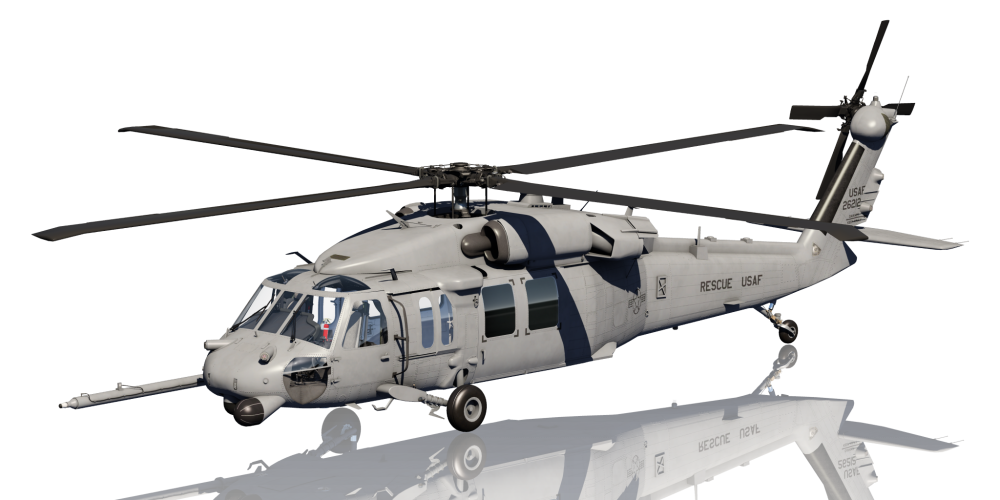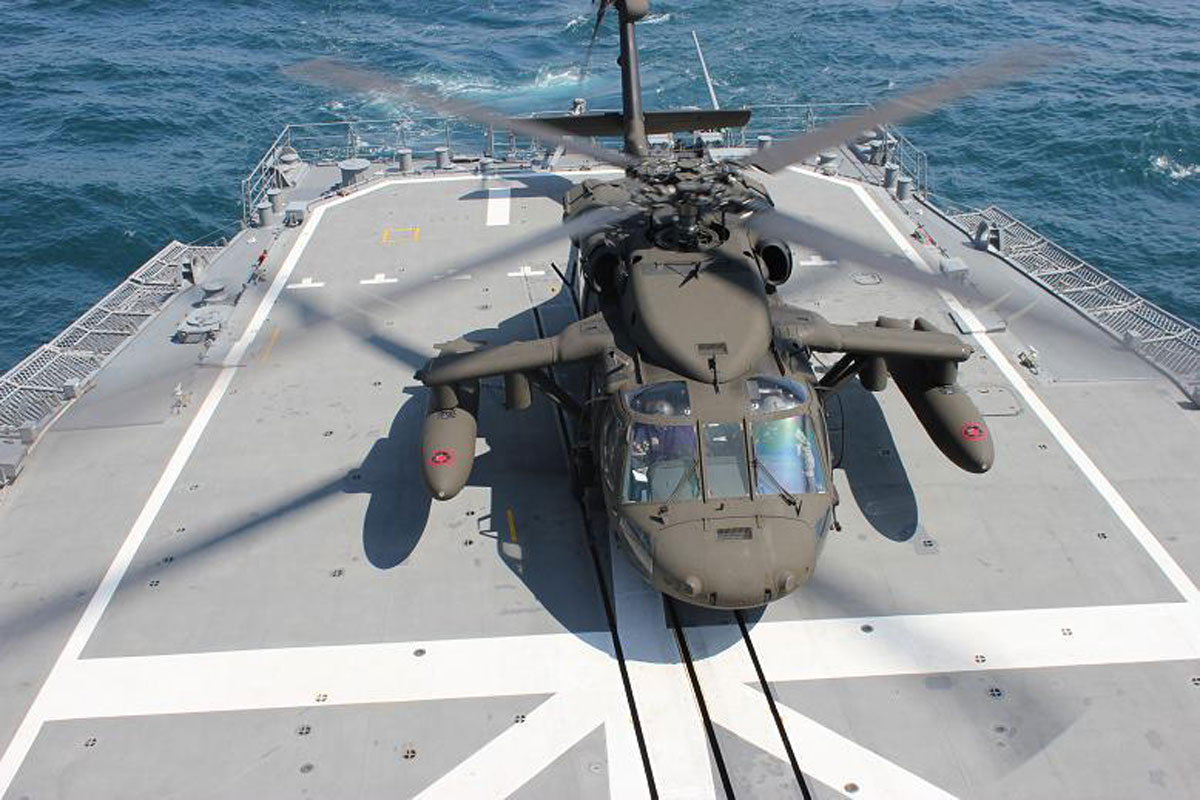Recognizing the Engineering Quality Behind the UH 60 Helicopter
Recognizing the Engineering Quality Behind the UH 60 Helicopter
Blog Article
UH-60: Advancements in Modern Helicopter Layout
The UH-60 helicopter stands as a standard in contemporary aviation, showcasing significant improvements in design and modern technology that satisfy the developing demands of army operations. Its unification of innovative materials not only improves performance yet likewise addresses essential safety problems. Furthermore, the combination of advanced avionics has changed functional capabilities, allowing for greater situational understanding and decision-making performance. As we explore the evolution and key advancements of the UH-60, it comes to be important to consider exactly how these developments influence not only existing applications yet additionally the future landscape of helicopter layout.

Evolution of the UH-60
The evolution of the UH-60 Black Hawk helicopter stands for a substantial turning point in aerospace design and armed forces air travel. Presented in the late 1970s, the UH-60 was created by Sikorsky Aircraft to meet the United States Military's requirement for a flexible utility helicopter efficient in performing a variety of objectives. Its layout stressed rate, resilience, and ability to move, setting new requirements for operational efficiency.
The UH-60 features an unique four-blade blades system, which improves lift and stability, enabling it to run effectively in diverse environments. Its airframe is built from advanced composite products, adding to a reduction in weight while preserving architectural honesty. The helicopter's layout likewise incorporates enhanced aerodynamics, which enhances fuel efficiency and increases range.
Over the years, the Black Hawk has undergone numerous upgrades to boost its capabilities, including improved engines, advanced trip control systems, and modular systems for very easy upkeep and adaptability. The helicopter's capability to carry out goals ranging from troop transportation to medical evacuation has actually solidified its function as a foundation of U.S. armed forces procedures. The UH-60 Black Hawk remains a prime instance of exactly how advancement in helicopter layout can dramatically affect military effectiveness and operational versatility.
Advanced Avionics Systems
Advancements in avionics systems have transformed the capabilities of contemporary helicopters like the UH-60 Black Hawk, enhancing functional efficiency and situational understanding (UH 60). The combination of sophisticated avionics enables improved communication, flight, and navigating monitoring, making the UH-60 more versatile in varied objective accounts
Among the key functions is the advanced digital cabin, which uses multifunction display screens that provide real-time information, making certain pilots have instant access to critical flight info. This streamlining of information minimizes pilot workload and enhances decision-making procedures during complicated procedures. In addition, the unification of GPS and inertial navigation systems allows precise positioning and route planning, enhancing objective implementation in challenging atmospheres.
Moreover, progressed avionics systems improve interaction capabilities via secure data web links and voice communication systems, allowing seamless control with ground pressures and other airplane. The assimilation of automatic trip control systems further contributes to boosted stability and control, especially in negative weather problems or throughout low-altitude maneuvers.
Engine and Performance Enhancements
Engine performance in contemporary helicopters has actually taken a considerable jump forward, driven by innovations that improve power, dependability, and efficiency. The UH-60 Black Hawk, for circumstances, makes use of the T700-GE-701C engine, which features a dual-channel, full-authority electronic engine control system.
Moreover, the integration of engine health tracking systems permits real-time diagnostics and predictive upkeep, significantly enhancing functional reliability. These systems not just alert crews to prospective problems prior to they become essential however additionally facilitate more efficient upkeep scheduling, thereby minimizing downtime.

Materials and Structural Innovations
Recent developments in materials and architectural style have actually revolutionized modern-day helicopter building and construction, improving both performance and sturdiness. The introduction of advanced composite products, such as carbon fiber strengthened polymers, has significantly reduced weight while keeping structural stability. This change not only enhances fuel performance but likewise increases haul capacity, enabling helicopters like the UH-60 to perform more diverse goals.
Furthermore, technologies in light weight aluminum alloys and titanium elements have actually added to enhanced resistance to corrosion and fatigue, expanding the life expectancy of important airframe components. The critical use these materials has actually led to a reduction in upkeep needs and improved overall functional readiness.

Additionally, the assimilation of computer-aided style (CAD) and additive manufacturing innovations has actually enabled a lot more light-weight frameworks and complex geometries, maximizing the wind resistant efficiency of helicopter styles. These improvements help with fast prototyping and manufacturing, enabling makers to respond promptly to advancing objective requirements.
Safety and Survivability Features
Security and survivability features in modern helicopter style have become paramount, mirroring the increasing demands for objective efficiency in tough environments. The UH-60 Black Hawk, a significant instance, integrates advanced innovations to boost staff and passenger protection. One of one of the most critical advancements is the consolidation of crashworthy gas systems made to minimize the risk of fire during effect. Furthermore, the airframe is created with enhanced products that absorb and dissipate energy, more protecting occupants in case of a crash.
The helicopter additionally uses a ballistic defense system, that includes armored staff seats and essential systems protecting, decreasing vulnerability to little arms fire and shrapnel. Improved situational understanding is accomplished with sophisticated avionics and sensing unit technologies, enabling pilots to identify and stay clear of threats successfully.
Furthermore, the combination of redundancy in crucial systems-- such as dual engines and straight from the source numerous flight control channels-- ensures ongoing operation also if one system falls short. The UH-60 is geared up with advanced emergency situation flotation devices, improving survivability in water touchdowns. Jointly, these attributes not just improve the security more information of employees however additionally raise objective success prices in hostile environments, showing the dedication to excellence in helicopter design.
Verdict
The UH-60 helicopter represents a substantial advancement in contemporary air travel modern technology, incorporating innovative materials, innovative avionics, and durable safety and security features. In general, the UH-60 offers as a benchmark for future developments in helicopter style, symbolizing durability and adaptability in modern army procedures.
The UH-60 helicopter stands as a benchmark in modern aviation, showcasing significant developments in style and modern technology that provide to the progressing needs of military procedures. As we discover the development and key innovations of the UH-60, it ends up being crucial to consider exactly how these developments influence not only existing applications yet also the future landscape of helicopter style.
Introduced in the late 1970s, the UH-60 was created by Sikorsky Airplane to meet the United States Military's demand for a functional energy helicopter capable of carrying out a variety of missions. The UH-60 Black Hawk continues to be a prime instance of exactly how development in helicopter design can significantly influence army efficiency and operational adaptability.
On the whole, the UH-60 serves as a benchmark for future growths in helicopter style, embodying resilience and convenience in modern military procedures.
Report this page